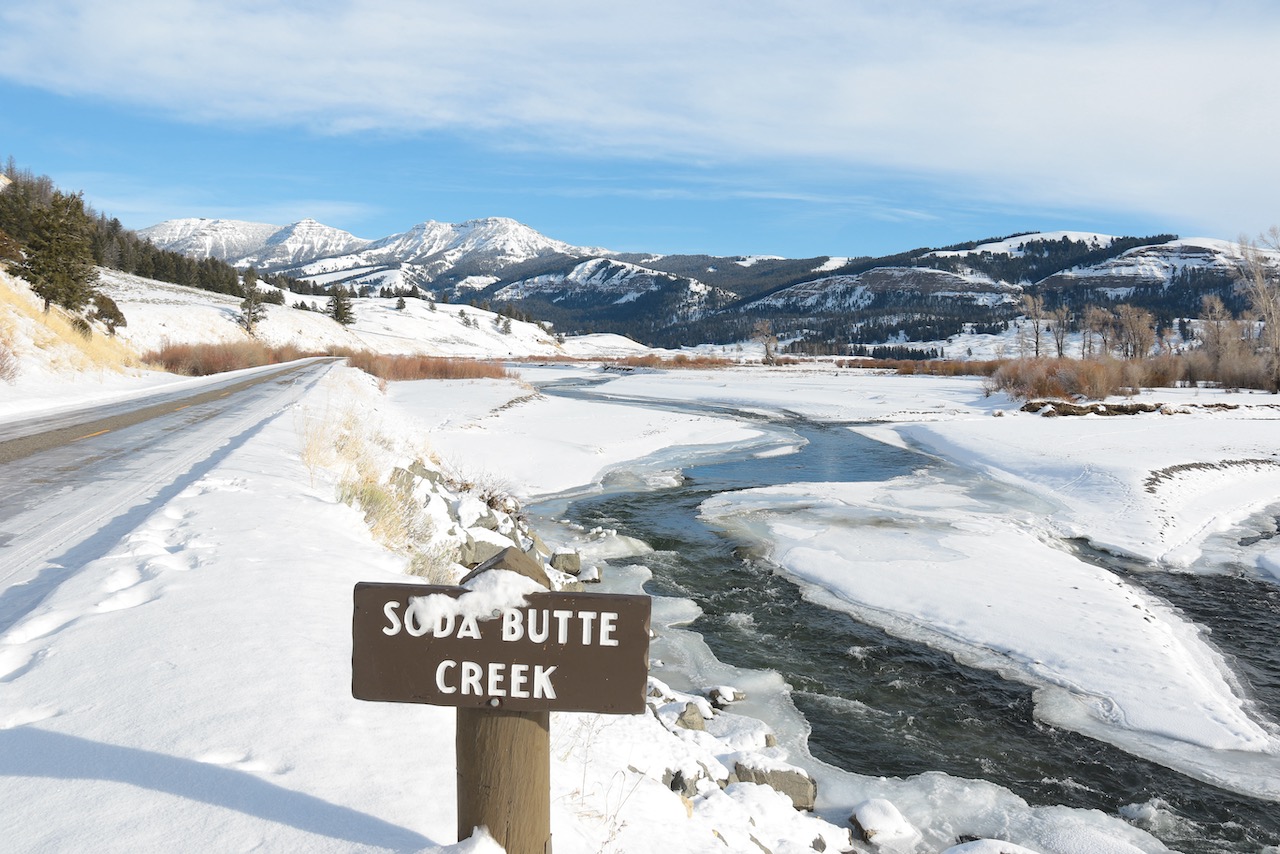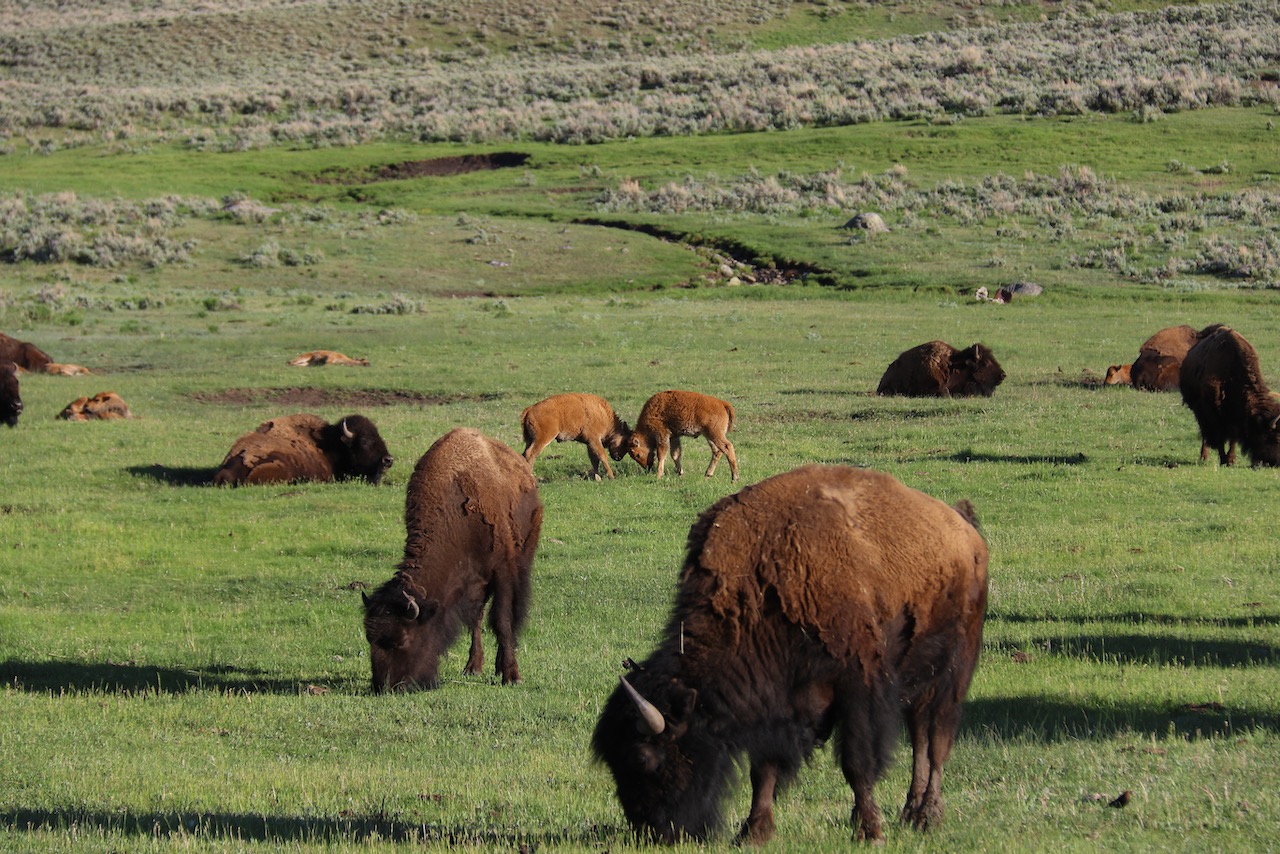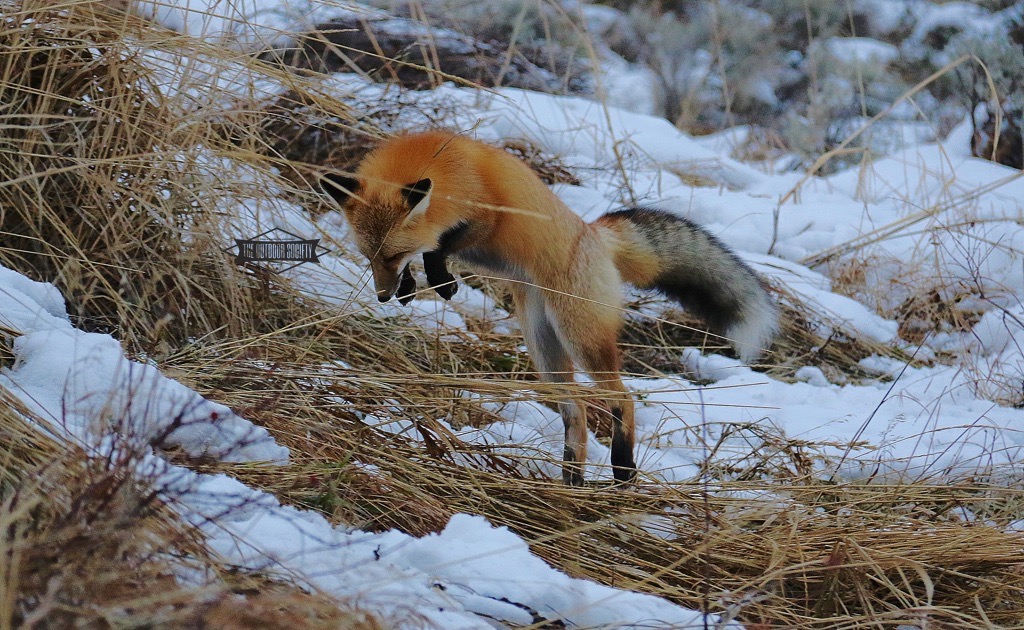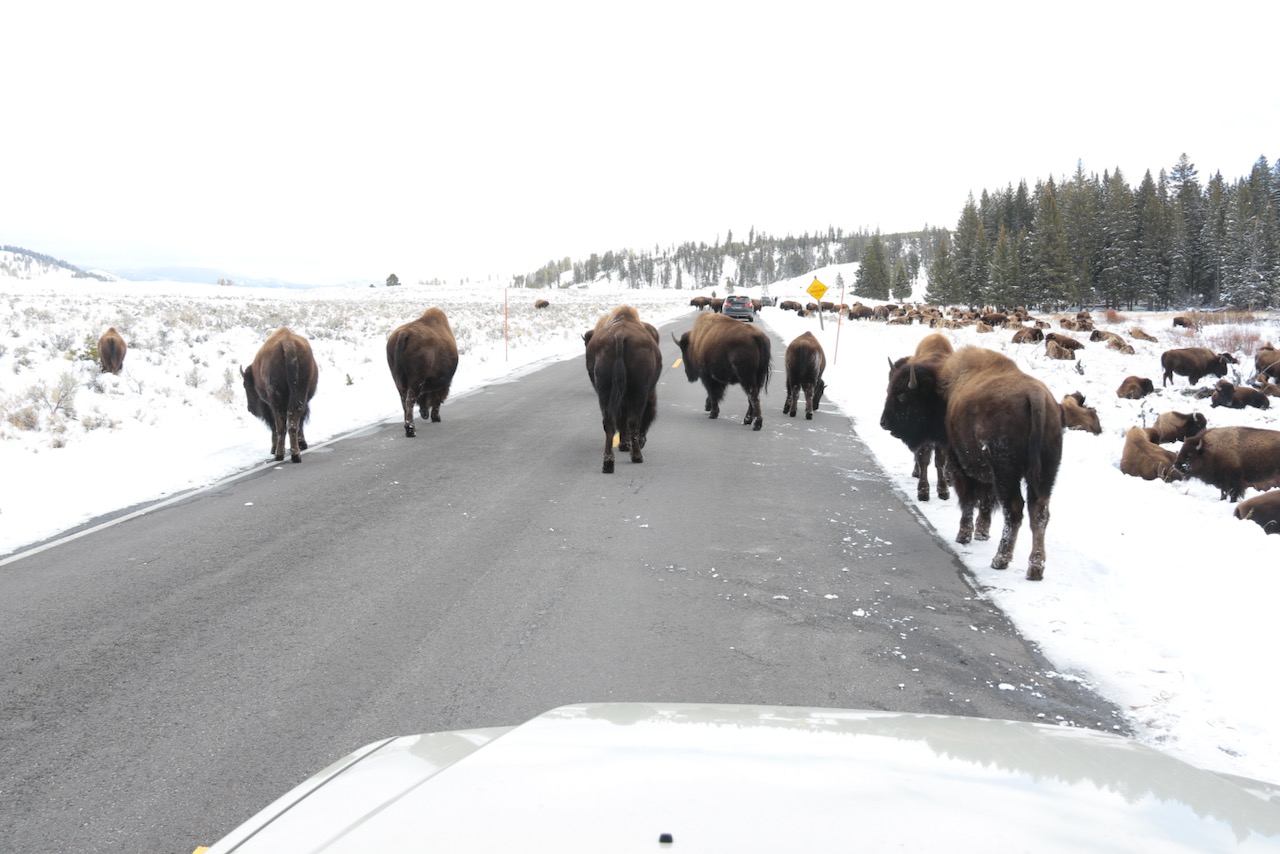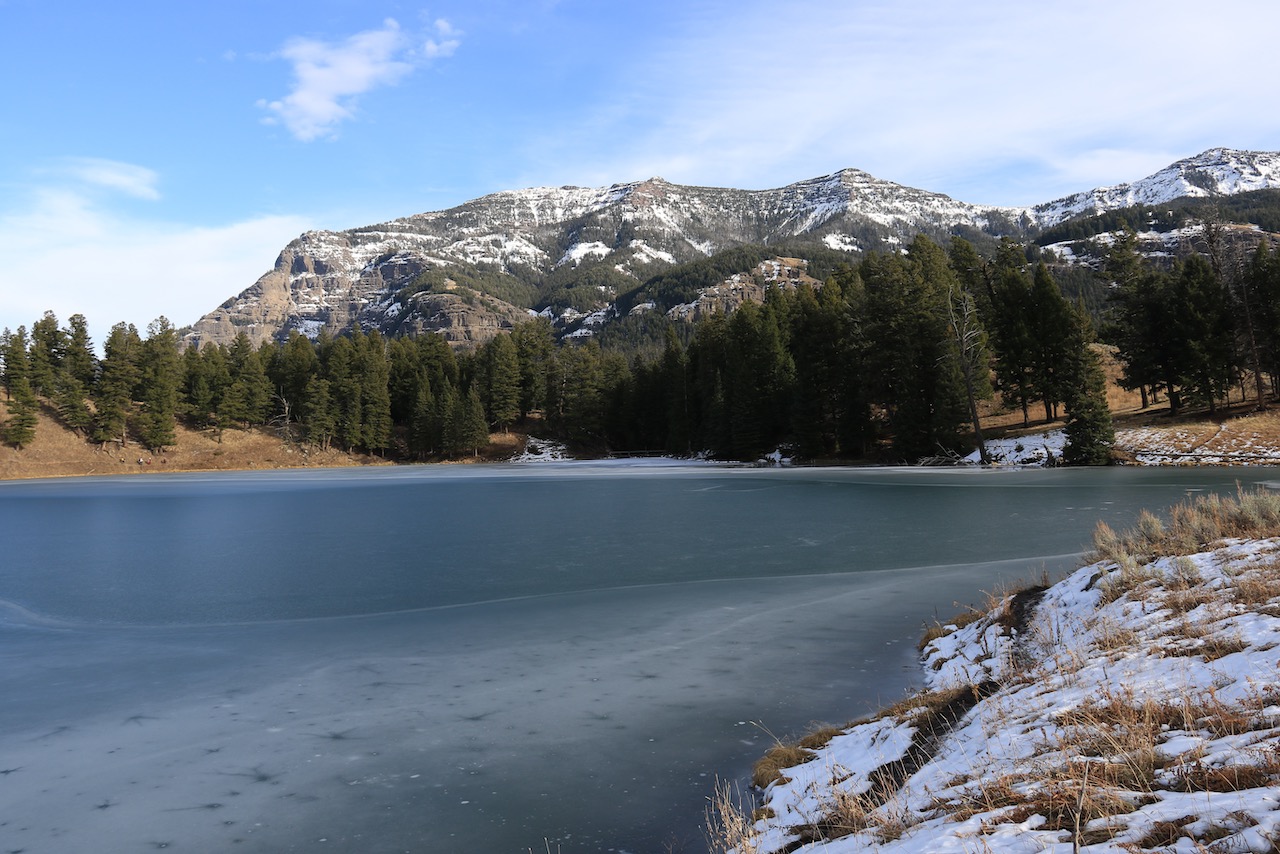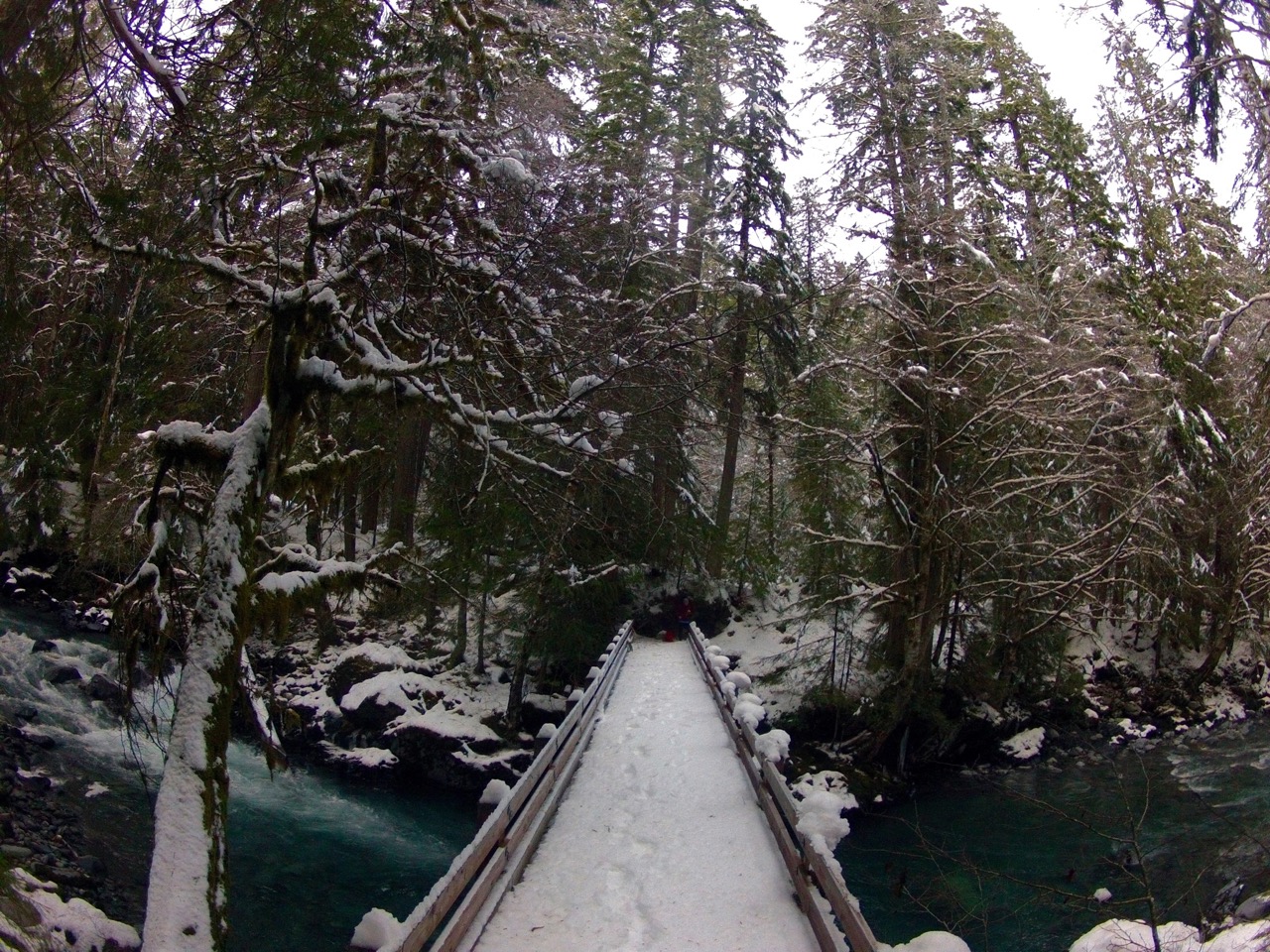This week in Yellowstone, I share about a bald eagle with pied plumage seen around the park, provide an update about the wolf hunt and let you know you have a say in the future of Yellowstone’s bison. Plus, I give you a few spots to see frozen lakes and the historic town of Gardiner, Montana from the trails. If you are headed out this week, you should have an amazing time!
If you enjoy this or know someone who will, please share this and get ready to visit America’s first National Park. If you want to support my weekly park posts, please pick up a guidebook!
BIGGEST NEWS OF THE WEEK
Yellowstone Wants Your Input on The Future of Bison
Earlier this week, Yellowstone announced that it intends to prepare an Environmental Impact Statement (EIS) for a Bison Management Plan at Yellowstone National Park. Introducing a broad range of actions to manage bison inside the park, the park put forth three plans regarding bison, with varying population ranges and management activities, for the public to consider. The following is from the NPS press release. I want to leave it as is to prevent any of my personal bias to interfere with your thoughts. Be aware that “at the conclusion of the 30-day public comment period, the NPS will analyze and consider all comments received and refine the issues, alternatives and impacts analyzed through the development of the Draft EIS. When complete, the Draft EIS will be released for a 45-day public review and comment period, expected in fall 2022.”
The actions to choose from are:
Alternative 1 (No Action, Continue Current Management)
The NPS would continue management of bison pursuant to the Interagency Bison Management Plan (IBMP), maintain a population range of bison similar to the last two decades (3,500 to 5,000 bison after calving), continue hunt-trap coordination to balance population regulation in the park by using culling at Stephens Creek and hunting opportunities outside the park, increase the number of brucellosis-free bison relocated to tribal lands via the Bison Conservation Transfer Program (BCTP), and work with the State of Montana to manage the already low risk of brucellosis spreading from bison to cattle.
Alternative 2 (Enhance Restoration and Tribal Engagement)
Bison would be managed within a population range of about 4,500 to 6,000 animals after calving with an emphasis on using the BCTP and tribal hunting outside the park to regulate numbers. The NPS may use proactive measures such as low stress hazing of bison toward the park boundary to increase tribal hunting opportunities outside the park. The NPS would reduce shipment to slaughter based on the needs and requests of Tribal Nations.
Alternative 3 (Food-limited Carrying Capacity)
The NPS would rely on natural selection, bison dispersal, and public and tribal harvests in Montana as the primary tools to regulate numbers, which would likely range from 5,500 to 8,000 or more animals after calving. Trapping for shipments to slaughter would immediately cease. The NPS would continue captures to maintain the BCTP as in Alternatives 1 and 2.
A 30-day public comment period also began Friday, Jan. 28. Interested individuals, organizations and agencies are encouraged to provide written comments regarding alternatives, information and analyses to be addressed in the Draft EIS.
The preferred method for submitting comments during the comment period is online. Comments may also be mailed or hand-delivered to the following address: Superintendent, Attn: Bison Management Plan, PO Box 168, Yellowstone National Park, WY 82190.
The deadline to submit comments is Monday, Feb. 28.
In addition, Yellowstone National Park will host two virtual public meetings during the public comment period. Attend these meetings to learn more about the plan and planning process and ask NPS staff questions. Public meeting details include:
Webinar 1:
- Feb. 9, 2022, 5:30–7 p.m. MST
- Link: https://attendee.gotowebinar.com/register/2460364395865970700
- Webinar ID: 856-248-035
- Audio: +1 (415) 655-0052 Access Code: 902-543-158
Webinar 2:
- Feb. 10, 2022, 12–1:30 p.m. MST
- Link: https://attendee.gotowebinar.com/register/3873438048186311436
- Webinar ID: 889-739-083
- Audio: +1 (415) 930-5321 Access Code: 456-608-998
OTHER NEWS
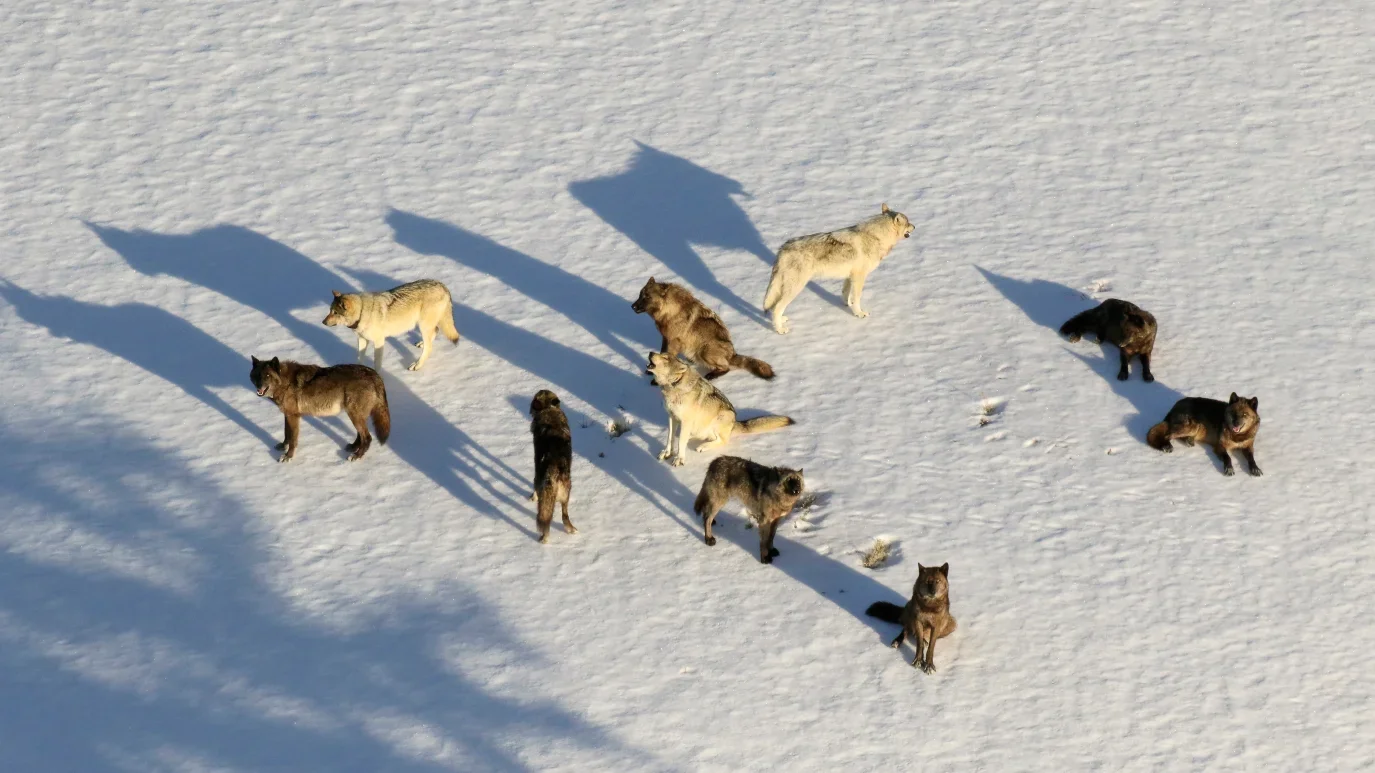
Wolf Hunt Update
I’ll keep this short. You may have heard that Montana wildlife commissioners unanimously voted on Jan. 28 to close the wolf hunting and trapping season in Region 3. The region, which borders Yellowstone National Park, will close to wolf hunting after five more wolves are killed. As of publication, 77 wolves have been killed in Region 3, including 23 wolves that left Yellowstone’s invisible borders. Region 3’s wolf harvest numbers, which will stop when 82 wolves are killed, are far higher than anywhere else in the state. This could potentially represent the desire to kill a prize wolf of Yellowstone by hunters. Yellowstone is still home to an estimated 91 wolves and we are just a few months away from getting a new batch of pups.
A few more interesting take aways from this year’s Montana Wolf Hunt: Montana Fish, Wildlife and Parks estimates Montana’s statewide wolf population at around 1,000 animals. Also, 190 wolves have been killed this season, which is in line with the average wolf harvest in recent years.
Luck for a Last Minute Campsite in the Park Decreases
Happy Valentine’s Day! Beginning Feb.14, 2022, visitors will be able to make advance reservations for additional campgrounds in Yellowstone National Park on Recreation.gov. the campgrounds included for this upcoming date are Indian Creek, Lewis Lake and Pebble Creek.
The new system is a direct response to public requests for a reservation system at park campgrounds. While it does make planning ahead to stay at these smaller campgrounds easier, this announcement takes away the chance for a day-of lucky snag of a campsite at these locations.
At Indian Creek, Lewis Lake, Pebble Creek, Mammoth and Slough Creek campgrounds, 80% of sites will be reservable six months in advance, while the remaining 20% of sites will be available two weeks in advance. Being able to make reservations two weeks in advance will allow visitors the flexibility to reserve campsites closer to their arrival dates. The parks acres that the “ability to make reservations will enable visitors to plan their trips ahead of time and provide assurance that they will have a campsite upon arrival. It will enrich the visitor experience by reducing traffic congestion at campgrounds, improving safety and eliminating uncertainty and frustration.”
SNOWPACK UPDATE
Snow is in the forecast, but it won’t be enough to swing momentum back toward a normal snowpack. As of publication, the snowpack in and around Yellowstone is less than average. The worst area for snowpack is the Upper Yellowstone Region, which includes the Absaroka-Beartooth Wilderness, the Beartooth Plateau and the Northern Range of Yellowstone National Park. This number, currently resting at 84% of normal, will continue to drop. I wouldn’t be surprised if it drops into the 70% range in the next few weeks. Hopefully, a series of storms will return soon and make me incorrect.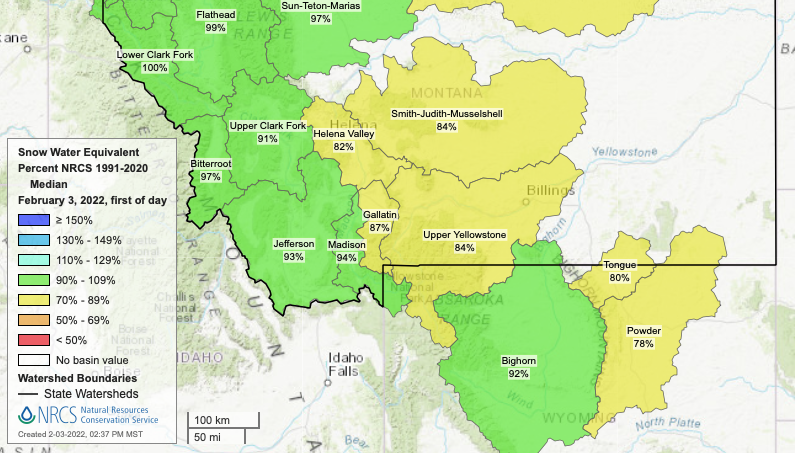
WEATHER FOR THE COMING WEEK
After a brief cold streak last week, the park’s temperatures settle in to a predictable winter pattern. The highs will be in the 20s or 30s and the lows will be in the teens to single digits. Late Friday and all of Saturday should see snowfall through the northern region, with another chance of snow midweek. Overall,it should be a decent week. 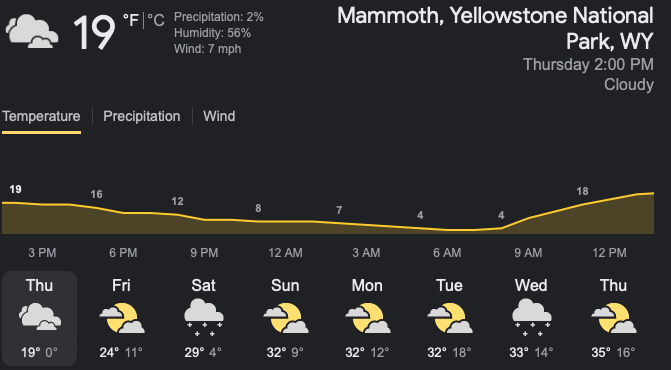
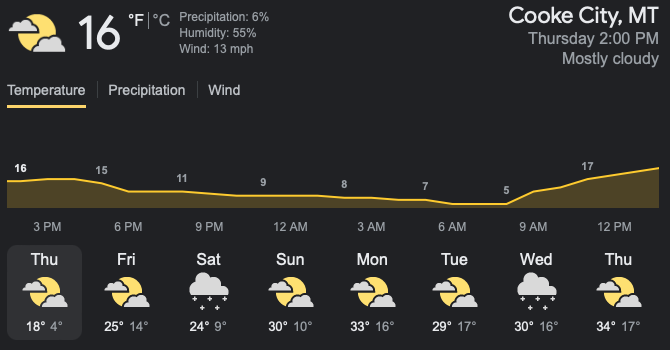
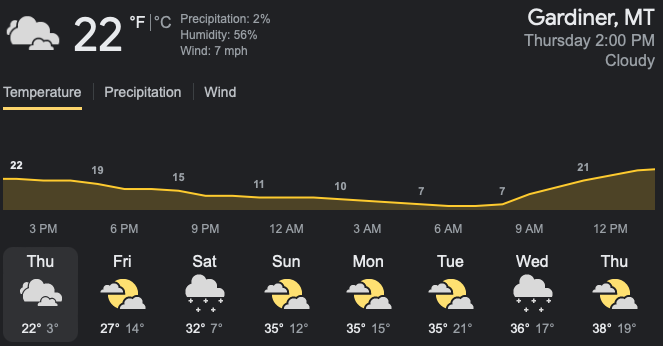
This is the weather.com forecast for the three closest areas that are currently drivable in the park- Gardiner, Mammoth Hot Springs and Cooke City. While they don’t specifically cover the entire region, these forecasts give a great idea of what to expect all around the region. As always, weather can and does change fast in the park, so always be prepared for anything.
WILDLIFE WATCH
There is a bald eagle with pied plumage has been spotted around the Northern Range. The eagle has the characteristic white head and tail we expect from bald eagles, but it also has a few wing feathers that are white, as well as a white belly. Atypical plumage like the eagle currently in the area is rare and seems to be limited to the Greater Yellowstone Ecosystem. In a study from 1979-1989, 3.5% of Yellowstone area eagles showed atypical juvenile plumage, while no occurrences took place at the other regions of Western North America. This eagle appears to be the same on that was spotted in the spring of 2020 in Lamar Valley, so keep an eye out for it.
Elsewhere, the moose continue to wander between the Lamar River and Barronette Peak, mostly in the prairie near Pebble Creek. Coyotes are being spotted all over as their mating season continues, while wolf views have been limited to sightings through spotting scopes, far away. There have been a few lucky sightings of them near the roads, but those have been very few and extremely far between. Near Pebble Creek, rumors of glimpses of otters have been heard, while sightings of bighorn sheep have been increasing. Deer, elk and bison will be all over the place. Want to know where you can see even more animals? I wrote a book for that very purpose! Pick up your digital ebook or paperback copy now!
ROADS AND CAMPGROUNDS
The roads aren’t too bad right now and should be perfectly manageable this coming week. You will encounter sections of snow and ice, some of which are signed and others come out of nowhere. Drive slow, the speed limit or below and use extreme caution when rounding corners with any compact snow or ice on them. Also remember that the roads do not have shoulders and if you drive even an inch off the road, you may quickly slide off.
For up-to-date information call (307) 344-2117 for recorded information, or sign up to receive Yellowstone road alerts on your mobile phone by texting “82190” to 888-777 (an automatic text reply will confirm receipt and provide instructions). Anticipate possible road closures due to inclement weather and dangerous driving conditions.
Planning on camping in the park this week?
If you are an avid reader of this section, you can probably say it with by now: No-one is really camping in the park and you’ll have you choice of spots at Mammoth, winter’s only open campground. There will be a few people scattered about, but be shocked if you have a neighbor. You can check the status of campgrounds in the park online here.
HIGHLIGHT OF THE WEEK
Located between Pebble Creek and the Soda Butte Cone is a small pullout on the north side of the road. Here, you’ll find a trailhead leading up to Trout Lake. This trail is fantastic for this time of the year. It is short, 1.2 miles in total distance, and not frequented as often as Slough Creek or Tower Falls. At the lake, you may see coyotes, elk or bison. I haven’t seen much else up there in the winter, but you never know!
You’ll need some decent gear to get up here, as the trail isn’t always in great shape. There should be snow, may be some ice and it could be slick at times. Snowshoes or aggressive traction devices will make the walk uphill much easier. Also be aware that it will be colder up higher and in the trees. Winds not felt from the parking area may be prevalent at the lake. Dress in layers, wear gloves and a hat, and know your limits.
After a steep climb up a few hundred feet of what could be slick snow and ice, the trail drops back down and meets the corner of the lake. From here, a boot path will lead around the lake, giving stunning views of the region’s mountains. I suggest walking counterclockwise to take it all in. One of my favorite views is found on the northwest corner of the lake, looking back toward the trail. The mountains rise up and look truly stunning.
TIP OF THE WEEK
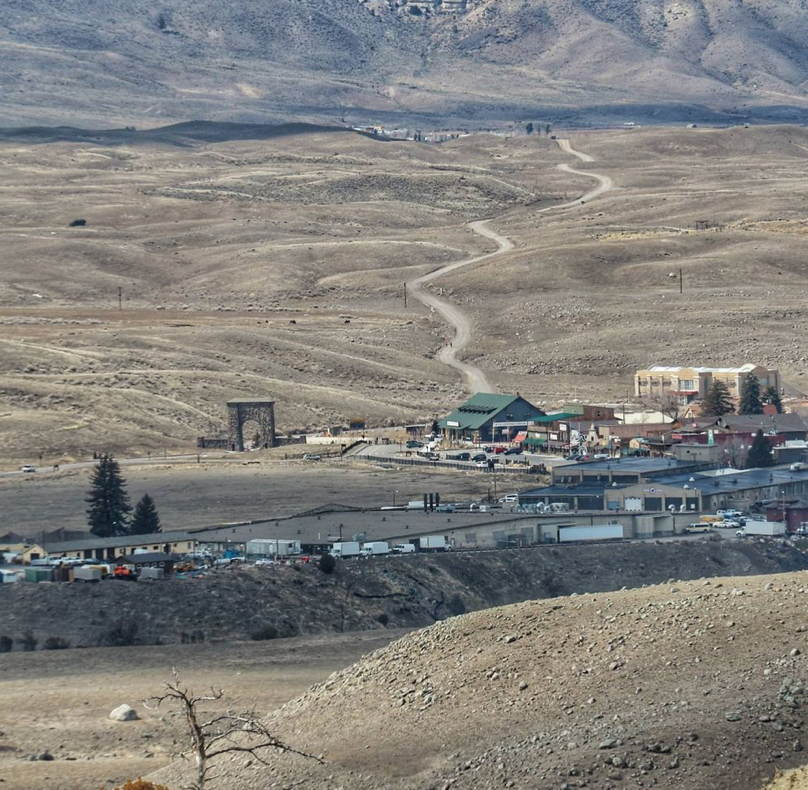 Take in a Unique View of Gardiner, Montana
Take in a Unique View of Gardiner, Montana
One you enter the park at Gardiner, a series of pullouts can be found on the north side of the road. These are all good places to stop and scan for the first views of wildlife, but one is a must-stop. Right before the road turns to enter Gardner Canyon, you’ll find a pullout with a trailing for the Rescue Creek trail. This route, which crosses the Gardner River on a scenic little bridge, is one that will give you some great views and vistas. The trail splits the prairie as it leads toward Turkey Pen Creek, but you don’t need to go that far. Instead, make your way toward the Yellowstone River. Before you reach the river, you’ll notice you have been walking next to a hill on the east side. Hike up this as best you can and then take a gander back toward Gardiner. The higher you go, the better the view. You’ll also possibly encounter elk and pronghorn, as well as deer and maybe even a bighorn sheep. If the off trail trek up the hill is too daunting, consider walking to any of the rocks above the Yellowstone River in take in the natural splendor.
Don’t want to hike? Take the road out of Gardiner toward Jardine. The road will climb quickly and give a fantastic view of the town and region.
WANT TO KNOW MORE?
Curious about something not mentioned in the post?
Send me an email or message on social media and let me know how I can help.

